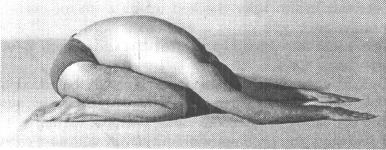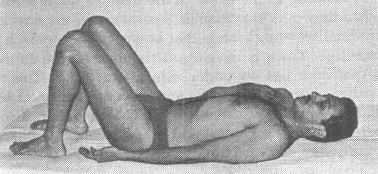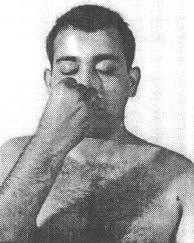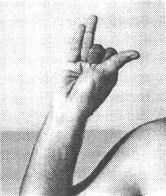HYPERTENSION
Hypertension consists of two words:
1. Hyper 2. Tension
Hyper means increased and tension means pressure. Hypertension means higher pressure of blood.
What is blood pressure? Our heart beats 72 times in a minute. This process must be repeating about one hundred thousand times a day With each beating of heart about half a cup of blood is pushed in arteries. The blood that is pushed in arteries supplies necessary needs to the whole body After circulating in the whole body, blood returns to get cleaned to the heart through the veins. The ‘force or pressure ‘that works -behind this process of blood circulation on so long a journey through all the arteries and veins is termed “Blood Pressure”. When this Blood Pressure increases, there is appreciable effect in the inner side of arteries.
When the heart contracts blood pressure increases. This is known as ‘Systolic Blood Pressure’. When heart relaxes and there is no contraction, blood pressure reduces. This is called ‘Diastolic Blood Pressure’. When pressure is normal, adult person registers 120/ 80 mm of mercury pressure. But when the pressure increases to 140/90 and above and remains at that level, then this increased Wood pressure is known as “Hypertension
As a person grows older, generally blood pressure goes on increasing. As the contraction of arteries increases, the arteries lose elasticity. But it is normally diastolic pressure which decides whether there is hypertension and if so, the extent of it. So, we can say that this diastolic pressure is the one tat tells us how high is the hypertension.
As the pressure is increasing the tension on the heart increases to that extent, and the conditions of the glands that secrete the juices inside are put under harder situation. As the blood pressure rises heart has to work more forcefully to push the blood in the arteries. The entry of blood in the arteries does not remain in the same proportion as required. Work to be done by heart is increased. Each beat becomes dissimilar in its movement. Because of this unexpected pressure, fluids do not ooze out of the kidneys in required proportion: Working capacity of kidneys decreases. Toxic fluid in the form of urea gets collected in the blood. The chemical reaction that takes place thus raises possibilities of many a different types of defects in the body
Because of the high pressure of blood there is damage to the internal walls of the arteries. The density of blood increases. It is not that blood gets thickened, but layers of cholesterol, triglycerides, phospholipids go on sticking to the walls of the arteries. In such condition because walls of the arteries become thick, the passage for blood circulation gets restricted and the natural passage gets hindered. As a result, possibility of blood being clotted is increased. This manner of blood clotting accidentally stops the circulation of the blood and due to such accidental stoppage the working of the heart gets affected. This could be an heart attack or this type of stroke can put the body in paralysis.
Blood pressure is of two varieties. One is, primary (essential) and second is secondary The reason for secondary high blood pressure is not merely hindrance in the flow of blood, but it results from some disease of some organ. For example, if the kidney has some damage, brain can suffer from epilepsy or hysteria or if thyroid or adrenal glands have started deteriorating or if the main arteries connected to the heart have contracted or if the passage for blood circulation has decreased due to increase of cholesterol, in all such circumstances secondary high blood pressure can only be brought under control after operation is performed to correct the different conditions enumerated. In such conditions Yogasana and Pranayama are not much effective. Yes, it is true that Pranayama if carried out and by practice of Shavasana further deterioration of the condition may be arrested to a certain extent. The basic working capacity of the internal secreting glands could increase; disease fighting capacity can also increase and blood pressure can be brought within normal levels.
Now we may collect a few details about this primary hypertension which is known as a silent killer. Unless the condition becomes abnormal increase of blood pressure is not felt at all by the diseased person. When the increase in pressure goes beyond control, then one feels headache, but then the reason is not so simple. The first type of blood pressure normally starts increasing because of more consumption of fat and salt than commonly consumed, if there is accumulation of more fat on the body if the body is obese, if one has diabetes, if one is addicted to tobacco in any form like chewing, smoking or snuffing, if one is too much emotional, or if one gets angry on small pretexts or there is a family history of high blood pressure then the possibility of uncommon increase in the blood pressure gets higher. This primary blood pressure is a life long problem and by getting a regular medical check up and taking some medication and medical treatment it can be kept under control.
The higher blood pressure can be brought down by observing the following rules:
Get your health fully checked up by a doctor every six months after you cross the age of 40.
One must get blood pressure checked every 2 or 3 months.
Reduce your weight take food which is balanced and which has no fat. Cut down consumption of sugar, jaggery, salt oil, ghee etc. Take exercise regularly
If you have any problem with urinary system first consult your physician. If you have urination attended within burning sensation or if the urine smells strong or urine is turbid you must consult the doctor.
Actively try to remain free from mental tension.
Blood pressure of first stage even though of a permanent
nature can be controlled if sufficient and proper medical aid is obtained,
necessary care is taken about food and if special exercises are taken regularly.
CAN THOSE HAVING BLOOD PRESSURE PRACTISE ASANAS?
Yes, they can practise Asanas; in fact they must surely practise them. All the Asanas excepting Shirsasana can be practised. All the Asanas can be practised without any fear. But the special Asanas and Pranayama that can offer help readily are: Shashankasana and Shavasana and Pranayama carried out with ease.
Initially practise these three Asanas. When there is recession
in the blood pressure then you can without fear and without worry perform
beginning with Trikonasana and Suryanamaskara, you can practise Sarvangasana,
Matsyasana, Halasana, Paschimottanasana, Bhujangasana, Shalabhasana, Dhanurasana
or Chakrasana, Ardhamatsyendrasana, Yogamudra, Mayurasana. All can be practised
without any fear.
SHASHANKASANA
Sit in the Vajrasana position. This method is already explained earlier Keep back, neck and head in a straight line.

Shashankasana
(Fig—29)
Now take a deep breath and raise both the hands in one line with head up. Keep the palms of hands facing each other Now releasing breath and keeping the head steady in between the shoulders, come down right up to the ground so that both the palms of the hands touch the ground. The forehead also should touch the ground. The elbow should also touch the ground. But be sure that while bending down in this manner both the buttocks will remain set between both the heels. They should not be raised. They should not be allowed to leave their place. As you go on bending forward, go on releasing the breath. Try to retain the breath outside when the head touches the ground. This is called Bahir (outside) — Kumbhak. When you start breathing in raise the head. When we sit in Vajrasana, weight will be shared by both the muscles of the thighs. Therefore circulation of blood in those portions will be reduced but that supply will be diverted to belly, lungs, heart neck, and the upper part of the head. Because of the pressure on the hind parts of the legs, flow of blood in the parts of the body above the navel is diverted in sufficient quantity. Because the forehead is touching the ground this part of the head goes lower than the heart lying as it does in inclined position and for a little time blood circulation in head is also increased. Heart has to work less in pumping the blood to the brain.
By bending in the front, in the manner Muslim friends do when they perform “Namaz”, parts under the navel and the internal secreting glands that lie inside the stomach also get massage. There is oxygen on the top side of the navel and Apanvayu lies on under side of the navel. This way, in Shashankasana both oxygen and Apanvayu get on a equal level. Thereby all the systems of the belly get trained in the proper manner. The control and equal balance of digestive system as well as blood circulation system is a panacea for high blood pressure disease.
Shasankasana is quiet a flaw-less Asana. Young and old all can
begin by performing this Asana starting with one and a half minute and
increasing the period between five to ten minutes. Of course, do not be worried
if you cannot keep the breath held outside for that much period. Breathe
normally Remain a witness of inhaling as well as exhaling of breath. This
exercise has been found very helpful.
SIVANANDA PRANAYAMA
By performing Sivananda Pranayma, prior to Shavasana and
before beginning the practice of other different Pranayamas, the practice of
Sivananda Pranayama has proved quite beneficial.
Lie down on the ground with face upwards. Bend both the legs from the knees. Knees should be kept pointing towards the sky and the heels of both the legs should be brought up to the buttocks but not touching them. Keep the distance between the legs same as the distance between the two shoulders. Keep both the hands loose and a little apart from the body and thighs. Keep palms of the hands facing upward. Concentrate the mind on the navel.
Now remain a witness to the respiration being breathed in and out. You must be aware that you are breathing. You must also be aware that you are exhaling. In this manner keep a watch over the respiration so that the breathing in and breathing out do not happen without your knowledge. You must remain happy in this watchfulness. The more that you can maintain this awareness, the more you will have control over your respirations and then you will also be able to control the blood circulation system. Blood pressure also gets controlled. You can practise Sivananda Pranayama m the morning, noon, evening as well as late night, whenever your stomach feels light, about three hours after meals.

Sivananda Pranayama (Fig—30)
SUKHPURVAKA PRANAYAMA
Biggest problem that we face is that we are unaware of our problems. We spend our life in a manner similar to a log going down in the current of a river. These logs are hardly aware of where they will be pushed, where they will get stopped, and where they will be again pushed in the current of water. We also continue breathing, breath comes in, breath leaves out. We are absolutely unaware whether we are breathing through the left or the right nostril, whether our chest expands or get pressed in when we breathe, does the stomach get pressed or does it expand? We are absolutely unaware. My grandfather was born, the late grandfather also died, my own father ‘Valisahab’ also was born and in the end he went to the kingdom of Allah and God willing one day I will also be called by Allah, is it not? But today this is not the situation. Even the most common man is today aware and alert about sound health. We should therefore, learn to take breath in and out in such a way that we remain helpful to the breathing system. We should breath in and out through both the nostrils.
This respiration process works as a bridge between body and mind. If one forms a habit of taking deep respiration for 15 to 20 minutes, both morning and evening, 90% of the complaints about Blood Pressure could be solved. Doctor Mrs. Jyotiben Mankad of Sivananda Ashram is an expert in Yogasanas and Pranayama. She gives hints and advice to patients suffering from various diseases, on getting cured of diseases through Yogasanas and Pranayama.
There was one Dr Lalitaben Patel, M.D. DGO, a well known gynecologist of Ahmedabad who was a heart patient. She is performing Asanas and Pranayma regularly since last two years. She began by learning flexibility, Asanas, Tadasana, and Shashankasana. Now she is able to perform even Chakrasana and Dhanurasana. This Doctor aged 58 years reports, “Two years back my weight was more; I used to get very angry, blood pressure also remained fairly high; now the weight has gone down appreciably the body feels alert, I do not know where I lost my anger! Since last one year, I am consuming no medicine and tablets. Mind is happy I can work with good enthusiasm. All persons in the house are no doubt happy, but my patients also do not get disturbed. What else do we want? Therefore, practise Pranayama.”
When we breathe in, lungs will expand, belly will blow out. When we exhale, lungs will get contracted and belly will also be pulled inside.
One can sit with simple crossed legs for Sukhpurvaka Pranayama. If you practise sufficiently, you can also sit in Padmasana, Siddhasana, Swastikasana or Vajrasana, keeping the spinal column straight. It is necessary to form this habit.
Begin this Sukhpurvaka Pranayma quiet slowly and with ease.
Breathe in through the left nostril. Breathe out through the left nostril.
Breathe in through the right nostril. Breathe out through the
right nostril.
Breathe in through the left nostril. Hold the breath. Breathe out through the left nostril
Breathe in through the right nostril. Hold the breath. Breathe out through the right nostril.
Breathe in through the left nostril. Breathe out through the right nostril.
Breathe in through the right nostril. Breathe out through the left nostril.
Breathe in through the left nostril. Close the left nostril and hold the breath inside. Breathe out through the right nostril.
Breathe in through the right nostril. Close the right nostril and hold the breath inside. Breathe out through the left nostril.
Breathe in through the left nostril. Hold the breath inside, closing the left nostril. Release the breath through the right nostril. Close the left nostril. Close the right nostril and see that you do not breathe in i.e keep the breath outside.
Breathe in through the right nostril. Retain breathe, inside, closing the right nostril. Exhale through the left nostril. Keep the breath outside after closing the left nostril. Thus do not breathe.
Breathing in is
called Purak i.e: 1
Holding the breath: Kumbhak:
4
Exhale: Rechak :
2
Retention of breath inside is termed Antar-kumbhaka and not allowing the breath to get in i.e stopping it outside is called Bahya-kumbhaka. In the same manner that we retain the breath inside, one has to hold the breath outside also. If in this manner practise is carried out, Purak,

Sukhpurvaka
Pranayama (Fig—31i)
Antarkumbhak, Rechak, Bahyakumbhak then the proportion of time in breathing will be 1:4:2:4.
But from the first day practice, it may not be possible to breathe in this proportion, hence we should form the habit by slow practice in the following proportion:
1:1
1:2
1:1: 2: 1
1: 2: 2: 2
1: 3: 2: 3
1: 4: 2: 4
If every day, morning and evening, respiration is controlled in this manner atleast for 15 to 20 minutes by practising and forming a habit, the ghost of blood pressure will take to its heels permanently
For the purposes of practice of Sukhpurvaka Pranayama, one should sit steadily and hold the nose by right hand. Keep the palm of the right hand facing the face. Bend the two fingers next to the thumb inside. Now put the right thumb on the right nostril and last two fingers of the same hand be used to press the left nostril. Always start breathing with left side.

Sukhpurvaka Pranayama - the pose of the hands. (Fig—3lii)
At the end of the practice of all Asanas, a high blood pressure patient must invariably practise Shavasana.
Lie
down with the back on the ground. Relax the hands and the legs. Listen the
beating of the heart. Now be a witness to the entry as well as the exit of air
through the lungs. See that the thumbs of the legs, fingers, soles of the legs,
knees, ankles, leg muscles, buttocks, waist, and back belly, chest, both the
hands and the arms, shoulders and face, all these must feel relaxed. You must
experience the relaxation of these parts. You must go through the bodily
relaxation, mental relaxation and in the end feel that the blood circulation
system works quietly in a perfect manner (for details refer Chapter on Asthma-2)
It is definitely essential to control the intake of food,
which is the main cause of the hyper-tension. Those Gujaratis staying in America
can preferably remember the following Pizza, Pasta,
and Coke . These three
makes you weep loudly. If we bear in mind this much, it is enough.
Latest Additions.........
|
Sivananda Yoga (Yoga DVD) Diwali Prasad booklet - "Kanakdhara Stotram" ( Sanskrit/ Gujarati/ English) Divya Jivan (Gujarati)/ "Amrut Putra" (Gujarati) Atam Mahek (Gujarati) / Fragrance ( English) - Swami Adhyatmananda |
Yoga, A Way of Life - Sri Swami Adhyatmananda
"Yoga and Health" - a complete book with Question & Answer section by Sri Swami Adhyatmananda
|
![]()
|
Please subscribe to Divyajivan Mailing List. We will update you with new uploads of spiritual literature on the web of Holy Master Sri Swami Sivanandaji Maharaj, saints of his lineage and other saints. We will also update you about the Sivananda Ashram, Ahmedabad website and facilitate communication with Sri Swami Adhyatmanandaji Maharaj. |
|
To manage your subscription, please visit Subscription Page. You can also subscribe and unsubscribe from this page. You may unsubscribe by yourself anytime you wish. You will be required to send confirmation link that you will get in your e-mail to complete this subscription. |
![]()